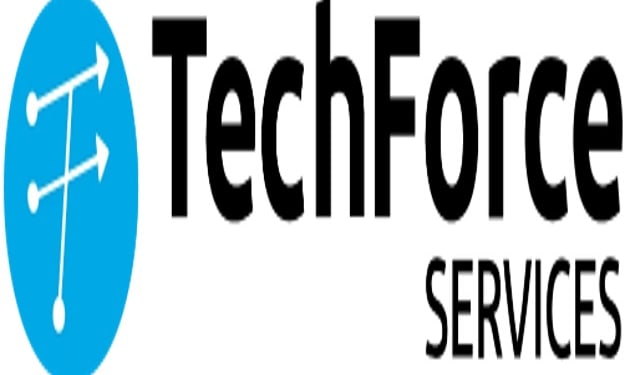Monitoring and Analysing Community Activity
Monitoring and Analysing Community Activity in Salesforce Experience Cloud

In today's digital-first world, businesses recognize the immense value of cultivating active and engaged online communities. These communities, often hosted on platforms like Salesforce Experience Cloud, provide a space for customers, partners, and employees to interact, share knowledge, and collaborate. However, to truly harness the power of these communities, organizations must monitor and analyze community activity effectively. Utilizing advanced tools like CRM Analytics, Salesforce Financial Services Cloud, and Salesforce AI, businesses can gain deep insights into user behavior, engagement patterns, and overall community health. This article explores the strategies and tools for monitoring and analyzing community activity, helping organizations drive better engagement and make data-driven decisions.
The Importance of Monitoring Community Activity
Active community monitoring is crucial for several reasons:
1. Enhanced Engagement: By understanding how users interact within the community, organizations can foster deeper engagement through targeted content and personalized experiences.
2. Issue Resolution: Monitoring allows businesses to identify and address issues promptly, improving customer satisfaction and retention.
3. Insightful Analytics: Analyzing community activity provides valuable insights into user behavior, preferences, and trends, informing strategic decisions and optimizing community management.
Setting Up Effective Monitoring in Experience Cloud
Salesforce Experience Cloud, a robust platform for creating branded digital experiences, offers extensive features for community management. To monitor community activity effectively, organizations should follow these steps:
1. Define Key Metrics and Goals
Before diving into monitoring, it’s essential to define the key metrics and goals for the community. Common metrics include:
• Active Users: Number of users engaging with the community over a specific period.
• Engagement Rate: The frequency of user interactions such as posts, comments, and likes.
• Content Performance: Metrics related to the consumption and impact of community content.
• Response Time: The average time taken to respond to user queries and issues.
Clear goals help in focusing on the most relevant data and deriving actionable insights.
2. Leverage CRM Analytics
CRM Analytics plays a pivotal role in monitoring community activity. It enables organizations to create detailed dashboards and reports that provide a comprehensive view of community dynamics. Key actions include:
• Custom Dashboards: Design custom dashboards that display real-time data on key community metrics. This can include visualizations like bar charts, line graphs, and heat maps.
• Automated Reports: Set up automated reports to be sent to community managers and stakeholders, ensuring everyone is informed about community performance.
• Data Segmentation: Use CRM Analytics to segment data by user demographics, behavior, and engagement levels, providing deeper insights into specific user groups.
3. Implement Salesforce AI for Predictive Insights
Salesforce AI enhances community monitoring by providing predictive insights and automating routine tasks. Key features include:
• Predictive Analytics: Salesforce AI can predict future engagement trends based on historical data, helping organizations prepare for changes in user behavior.
• Sentiment Analysis: AI-driven sentiment analysis helps in understanding the overall mood of the community by analyzing user posts and comments.
• Recommendation Engines: Salesforce AI can recommend relevant content and interactions to users, increasing engagement and satisfaction.
Analyzing Community Activity for Strategic Decisions
Once monitoring systems are in place, the next step is to analyze the data to inform strategic decisions. Here’s how to effectively analyze community activity:
1. Identify Engagement Patterns
Analyzing engagement patterns helps in understanding how users interact with the community. Key analysis points include:
• Peak Activity Times: Identify the times when the community is most active, allowing for strategic content posting and interaction.
• Popular Content: Determine which types of content (e.g., articles, videos, discussions) generate the most engagement and focus on creating similar content.
• User Journeys: Track the user journeys to see how users navigate through the community, identifying any potential friction points.
2. Measure Content Effectiveness
Content is a critical component of any community. Analyzing content performance helps in optimizing the content strategy. Key metrics include:
• View Counts: Number of views per content piece, indicating its reach.
• Engagement Metrics: Likes, shares, and comments, showing user interaction with the content.
• Conversion Rates: How often content leads to desired actions, such as sign-ups or purchases.
3. Monitor User Sentiment
User sentiment provides insight into how users feel about the community and its content. Sentiment analysis tools can categorize user feedback as positive, negative, or neutral. Key actions include:
• Sentiment Tracking: Regularly monitor sentiment to identify trends and address negative feedback promptly.
• Feedback Loops: Create feedback loops where user sentiment directly informs community management decisions.
4. Utilize Salesforce Financial Services Cloud for Financial Communities
For financial communities, integrating Salesforce Financial Services Cloud with Experience Cloud provides additional benefits. This integration allows for:
• Financial Insights: Monitor financial-related discussions and trends within the community.
• Personalized Financial Advice: Use data from Financial Services Cloud to offer personalized financial advice and content.
• Compliance Monitoring: Ensure all financial discussions and content comply with industry regulations, using integrated monitoring tools.
Best Practices for Community Monitoring and Analysis
To maximize the effectiveness of community monitoring and analysis, consider these best practices:
1. Regular Reviews: Conduct regular reviews of community metrics and performance to stay informed about changes and trends.
2. Engage with Users: Actively engage with community members to build relationships and gather direct feedback.
3. Iterative Improvements: Use insights from analysis to make continuous improvements to the community strategy and operations.
4. Training and Support: Provide training and support for community managers on how to use monitoring tools and interpret data effectively.
Conclusion
Monitoring and analyzing community activity is essential for building a vibrant, engaged, and successful online community. By leveraging Salesforce Experience Cloud, CRM Analytics, Salesforce Financial Services Cloud, and Salesforce AI, organizations can gain deep insights into user behavior and community health. These insights drive strategic decisions, enhance user engagement, and ultimately contribute to the overall success of the community. As digital communities continue to grow in importance, effective monitoring and analysis will be crucial in maintaining a competitive edge and fostering long-term growth.
About the Creator
Enjoyed the story? Support the Creator.
Subscribe for free to receive all their stories in your feed. You could also pledge your support or give them a one-off tip, letting them know you appreciate their work.





Comments
There are no comments for this story
Be the first to respond and start the conversation.